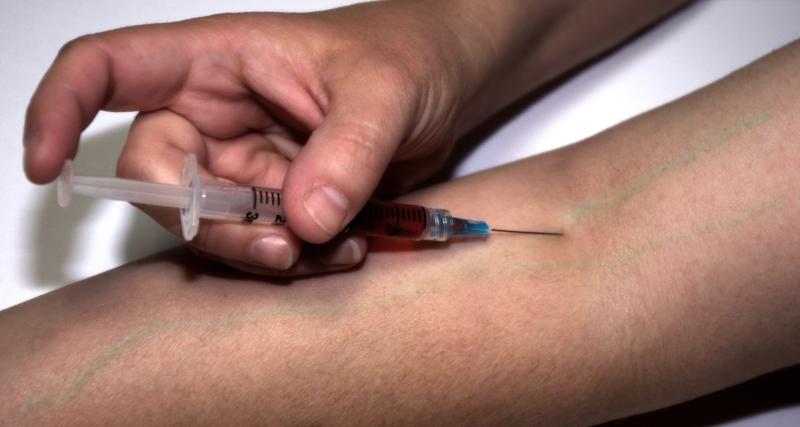
Ever wondered why the prick of a needle is painful but you never notice a mosquito pierce your skin for her bloody meal? Well, it has got to do with how the skin is punctured! While the mosquito saws through the skin with a back and forth motion of its proboscis, needles often pierce it forward with all the force. Scientists have now taken clues from such insect stings to develop needles of various shapes and sizes, including those that can reduce pain. In one such study, Prof Animangsu Ghatak from the Indian Institute of Technology Kanpur and his team has, with experiments, tried to understand the physics behind how a mosquito punctures the skin without causing pain. They found that low-frequency vibrations, along the axis of the needle, considerably reduces the resistance to piercing, thus reducing the pain.
The pain we experience with needle pricking depends on the force needed to overcome the resistance of the skin—greater this resistance, higher is the pain. Scientists have already developed specific shapes of needles, inspired by a mosquito's sting, to reduce this resistance. In the current study, the researchers observed that the mosquito, among other ways, also uses longitudinal vibrations along the axis of its proboscis while driving it into the skin.
Interestingly, few injection needles available in the market use high-frequency vibrations perpendicular to the needle to reduce pain. This mechanism masks the pain by causing a distraction from the real pain and could result in unwanted tissue damage. “In contrast, the results from our fracture tests show that low frequency (20-50 Hz) longitudinal vibration should be sufficient to minimise pain. It also corroborates the observation with mosquito proboscis, which too oscillates at 20-50 Hz frequency”, explains Prof Ghatak.
The researchers measured the force experienced by a syringe needle as it moved inside a block of polyacrylamide gel mounted on an acrylic sheet. As the tip of the needle travels inside the gel, it initially compresses the gel, which offers resistance to puncturing. As the needle moves further, at a critical distance, the gel gives way and develops a crack along the direction of the penetration. As the tip runs deep, it still experiences resistance, and lateral cracks develop.
The critical distance of a material depends on its intrinsic rigidity, also called shear modulus and the thickness of the needle tip. In their experiments, the researchers found that the resistive force experienced by the needle increases as it penetrates inside the gel up until the critical distance, where the gel cracks and the force suddenly falls. This force increases again and drops sharply, periodically, each time the needle traverses the critical distance inside the gel. Greater the diameter and the shear modulus, higher is the resistive force, causing more pain.
When the researchers vibrated the gel at a frequency of 20 Hz in the direction of puncturing, they observed that the critical distance increased and the penetration of the needle was interrupted less frequently. Besides, the resistive force experienced by the needle, before the gel cracked, was much smaller and subsequent fractures occurred with lesser resistance. A vibration of 20 Hz frequency and amplitude of 0.35mm increased the critical distance by three folds for fixed needle diameter and gel shear modulus. The resistance to puncturing, experienced by the needle, was halved.
“These results suggest that external vibration of gel helps in releasing the stored elastic energy in the gel ahead of the first crack. In other words, the arresting effect of the primary crack gets diminished and eventually gets eliminated”, say the authors.
The researchers also tested the effect of vibration for different values of gel modulus and needle diameters. They found that increasing the amplitude of the vibrations reduced the resistance to puncturing in all cases, and this effect was more pronounced for gels with higher shear modulus and needles with a larger diameter. Thus, vibrations greatly help when needles with a bigger diameter need to be used, as in the case of those used in blood transfusion. The researchers also observed that the total energy required to puncture the gel decreased, up to about 80% in some cases, as the amplitude of the vibration increased.
As a next step, the researchers plan to apply the results to the design of a needle and conduct clinical tests to verify if such a needle reduces pain. In addition to helping in designing better syringe needles, the results of the study can help better understand similar fractures in other contexts like cutting a block of soft material using a slender cylindrical rod or a knife, say the authors.





